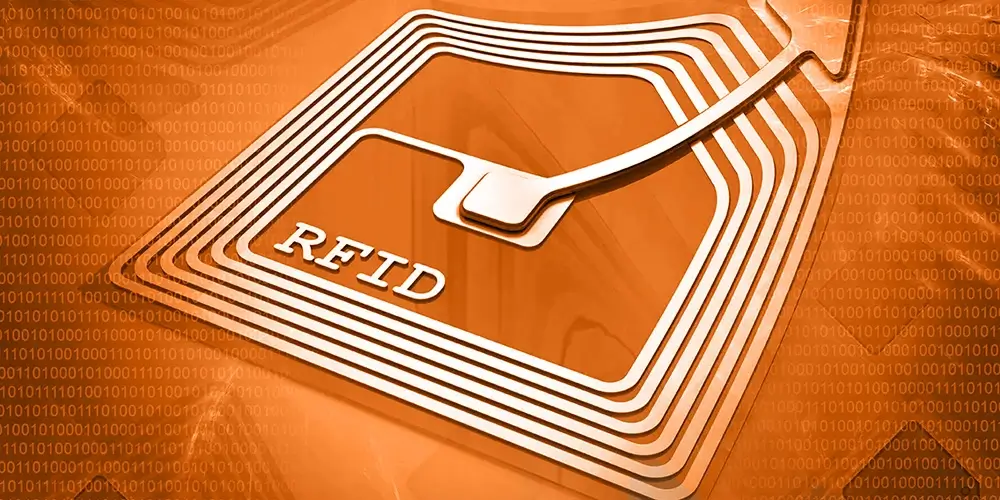
Much has been written about the benefits of RFID in the general Supply Chain.
For the past 10 years, big enterprises such as Wal-Mart, Volkswagen, the US Department of Defense (DOD) and Macy’s, amongst many others, have been implementing various aspects of RFID within their supply chains.
The results have been mixed.
In some instances, RFID technology has shown big potential (and returns) where as in others, it has fallen short.
The primary reason for some of the shortfalls is simple: simple physics, that is…
The media is partly to blame because it hyped the technology too much, too early.
The dream of a totally automated asset-tracking supply chain (at any level) spread like wild fire in trade magazines and conferences.
The ability to track in real time every shoe lace, all the way from the manufacturing plant, somewhere oversees, to the final consumer, created huge excitement in the industry and in the end, an utopic dream.
All of the sudden, supply chain managers would have complete visibility of every part and finished good moving through their supply chains.
The promises and expectations were enormous to say the least.
Then reality happened.
Supply Chain managers realized that implementing RFID tracking technology is as much art as it is science.
And the reason is simple physics.
The best analogy I can provide you is that of the old TV rabbit-ear antennas (if you were born after 2000, please view image below): Upon changing the TV channel, the TV image would become fuzzy, so you would get off the couch to move the antenna a little bit until the image became clear.

Once you thought you had it, you returned to the couch only to find out that as soon as you removed your hand from the antenna, the image would once again become fuzzy.
Touch the antenna again, and the image would become clear.
Take the hand off the antenna, fuzzy image again… How frustrating it was.
The question was, why would the TV reception change by the mere fact of touching the antenna? The answer: simple physics.
As you touched the antenna with your hand, the reception characteristics of the antenna would change.
This is because your hand (your body, really) has a large quantity of water in it (blood) and water is not a good conductor of radio waves.
At the same time, your body has a certain electro-magnetic characteristic that will affect the antenna reception.
So by surrounding the antenna with your hand (or even getting your body close to the antenna) the receiving characteristics of the antenna would change (for better or for worse).
RFID stands for Radio-Frequency Identification.
As its name implies, this technology uses radio waves.
Therefore, RFID implementations are subject to the same physical issues found when working with any other radio-wave based system.
Things like water, heavy metal surroundings, electromagnetic events and the like influence the reliability of such systems.
Engineers have gone through very extraneous exercises to minimize the sensitivity (to interference) of RFID, however, there is only so much they can do.
This is why when a company intends to implement a RFID system, it must pay particular attention to the environment in which it will be deployed.
Warehouses and plants tend to be metal-rich environments which may reflect radios waves in unintended ways.
Facilities with liquid-rich environments may experience reflection and refraction of the radio waves which may cause unexpected results when evaluating RFID tag read reliability.
An important aspect for a successful RFID implementation is the actual placement of the RFID antennas.
When placing antennas, it is important to find a spot that will mitigate the chance of these getting hit by moving objects, such as forklifts, people, equipment, etc.
It only takes a couple of inches of misplacement or misdirection for an antenna to drastically lower its read range or geometry, rendering the RFID infrastructure useless in that zone.
Likewise, determining the proper position and orientation of the antenna will be heavily dependent on the environment characteristics as well as the desired read-geospatial zone of detection.
In many instances, it is necessary to cover an area with multiple antennas to ensure high levels of read-reliability as well as redundancy.
Tag placement on the containers themselves is yet another important issue.
For instance, passive RFID systems have relatively weak power strengths.
This is important to understand, because the read distance (and reliability to some extent) is directly proportional to the power transmitted via the antenna (to energize the RFID circuitry on the tag).
This means that if the object being tracked is large and has a high content of liquid or is made up primarily of metal, the tag should be positioned in a way that is favorable for the transmission and reception of the signal with respect to the antenna.
In fact, it has been observed that, when tagging assets, it is better to use two tags instead of one.
By placing these tags on “opposite” sides of the asset, implementers have been able to maximize read-reliability while providing read-redundancy which aids in the detection of missing or malfunctioning tags.
Having a mechanism to auto-detect the health of the RFID infrastructure is also highly recommended.
The one thing about RFID is that it is not obvious (or easy for that matter) for a human to determine whether a RFID infrastructure is working properly or not.
If an antenna is not properly reading tags, is it because it has been “pushed-out- of-alignment”, because the antenna itself gas gone bad or the tags are broken? Because there are no visual cues, humans need tools to make this determination.
On common method used in the industry is to use multiple sentinel tags to determine antenna (circuitry) problems or “pushed-out- alignment” problems.
Like wise, by using multiple tags with each asset, operators can identify tag malfunctions.
On the other hand, however, if properly implemented and assuming that the use-case at hand merits a RFID solution, the benefits of using RFID can be enormous.
The wealth of useful information provided by RFID solutions allows enterprises to become aware of risky situations sooner, enabling them to make faster (and hopefully better) decisions when it comes down to managing their supply chain.
In the world of returnable packaging, RFID solutions tend to make sense when managing high value returnable containers (or high-value contents).
For example, if you are managing inexpensive totes and bins that carry relatively inexpensive parts, it may be difficult to justify the expense (and management/maintenance) of a RFID solution.
On the other hand, if your returnable packaging consists of steel racks costing a few thousand dollars each, there may be ample ROI justification for such solution (please contact us to receive a copy of our article titled The Business Case for RFID, from the book RFID Applied – This showcases a case-study on determining RFID ROI).
In summary, it is important to realize that implementing RFID tracking solutions is not magic.
RFID is a radio-wave based technology that abides by the laws of physics.
As such, it is a slave to the physical environment and, as we all know, any physical environment is subject to unpredictable variations and circumstances that will affect the reliability of the system as a whole.
However, we can use knowledge and experience to mitigate these variations and circumstances:
Do a proper physical assessment of the area where the infrastructure will be deployed.
An experienced RFID engineer/implementer will be able to point out areas of concern.
He/she should anticipate issues such as:
powers issues (UPS availability),
Wi-Fi coverage (for wireless RFID infrastructures),
antenna placement (with respect of moving objects),
antenna enclosures and mounting brackets (specially on dusty or open-weather environments),
antenna distance to the readers (the further they are, the higher the signal degradation)
Be on the look out for metal-rich or liquid-rich environments.
These may present deployment challenges that will require extra tweaking and possibly a higher level of infrastructure redundancy.
In many metal-rich environments, signal bleeding is real challenge that requires special types of antennas to gain control of the RF topology (which by the way, is three-dimensional).
Pay special attention to the placement of antennas.
Minimize the risk of bumps or hits by moving objects.
When placing the antennas, run various trials during normal operations to determine in the passing of forklifts or other moving objects alter the reading characteristics of the antenna.
If necessary, use multiple antennas to properly cover the read area but watch out for capturing “signal bleed” from other RFID portals.
When possible, use redundant RFID tags on assets to mitigate tag failure and increase read-reliability.
Tags are relatively inexpensive and therefore makes sense to use redundant tags to determine when a tag is not working.
Of course, the RFID middle-ware has to have to capability to discern such case, but the hardware redundancy must be present for the software to be able to detect missing or non-working tags.
When properly implemented, RFID solutions can provide very useful information to enable supply chain managers and packaging engineers monitor and optimize the use of their assets in their operations.
For more information, please contact us at info@loopmanager.com to understand how LoopManager can help you achieve success in managing your returnable assets.
Boosting Efficiency: How Returnable Asset Management Software Transforms Automobile Manufacturing
Harnessing Data Analytics and Predictive Maintenance for Returnable Asset Management
Improving the Returnable Packaging Loop
Leveraging Machine Learning in Asset Management
Secrets of Implementing an RFID Solution